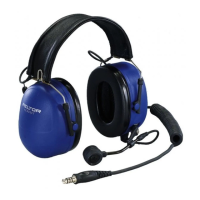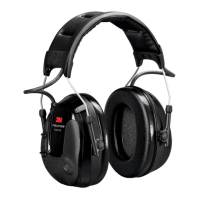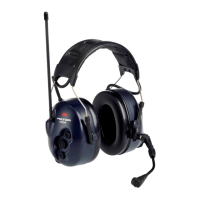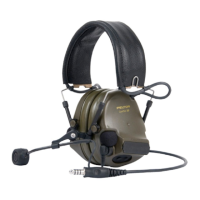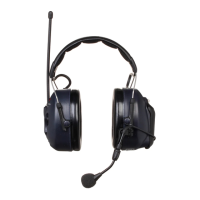1
3M™ PELTOR™ WS
TM
LiteCom Plus Headset
MT73H7A4310WS6EU, MT73H7P3E4310WS6EU,
MT73H7B4310WS6EU, MT73H7A4410WS6EU,
MT73H7P3E4410WS6EU, MT73H7B4410WS6EU,
MT73H7A4310WS6AZ, MT73H7P3E4310WS6AZ,
MT73H7B4310WS6AZ
3M™ PELTOR™ LiteCom Plus Headset
MT73H7A4410EU, MT73H7P3E4410EU, MT73H7B4410EU,
MT73H7A4310EU, T73H7P3E4310EU, MT73H7B4310EU,
MT73H7A4310AZ, MT73H7P3E4310AZ, MT73H7B4310AZ
INTRODUCTION
Congratulations and thank you for choosing 3M™ PELTOR™
communication solutions! Welcome to the next generation of
protective communication.
INTENDED USE
These 3M™ PELTOR™ headsets are intended to provide
workers with protection against hazardous noise levels while
allowing the user to communicate with built-in two-way radio
and/or an external radio and hear the surroundings via the
ambient microphones.
The WS
TM
models also provide Bluetooth
®
communication.
It is expected that all users read and understand the provided
user instructions as well as be familiar with the use of this
device.
IMPORTANT
Please read, understand, and follow all safety information in
these instructions prior to use. Retain these instructions for
future reference. For additional information or any questions,
contact 3M Technical Services (contact information listed on
the last page).
!
WARNING
This hearing protector helps reduce exposure to hazardous
noise and other loud sounds. Misuse or failure to wear hearing
protection at all times when exposed to hazardous noise may
result in hearing loss or injury. For correct use, consult
supervisor and User Instructions, or call 3M Technical
Services. If your hearing seems dulled or you hear a ringing or
buzzing during or after any noise exposure (including gunre),
or for any other reason you suspect a hearing problem, leave
the noisy environment immediately and consult a medical
professional and/or your supervisor.
Failure to follow these instructions may result in serious
injury or death:
a. Listening to music or other audio communication may
reduce your situational awareness and ability to hear warning
signals. Stay alert and adjust the audio volume to the lowest
acceptable level. The audibility of warning signals at a specic
workplace may be impaired while using the entertainment
facility.
b. To reduce the risks associated with igniting an explosion,
do not use this product in a potentially explosive atmosphere.
Failure to follow these instructions may reduce the
protection provided by the earmuff/earplug and may
result in hearing loss:
a. 3M strongly recommends personal t testing of hearing
protectors. Research suggests that users may receive less
noise reduction than indicated by the attenuation label
value(s) on the packaging due to variation in t, tting skill,
and motivation of the user. Refer to applicable regulations for
guidance on how to adjust attenuation label values. In the
absence of applicable regulations, it is recommended that the
SNR be reduced to better estimate typical protection.
b. Ensure the hearing protector is properly selected, t,
adjusted, and maintained. Improper t of this device will
reduce its effectiveness in attenuating noise. Consult the
enclosed instructions for proper t.
c. Inspect the hearing protector before each use. If damaged,
select an undamaged hearing protector or avoid the noisy
environment.
d. When additional personal protective equipment is
necessary (e.g. safety glasses, respirators, etc.), select
exible, low prole temples or straps to minimize interference
with the earmuff cushion. Remove all other unnecessary
articles (e.g. hair, hats, jewelry, headphones, hygiene covers,
etc.) that could interfere with the seal of the earmuff cushion
and reduce the protection of the earmuff.
e. Do not bend or reshape the headband or neckband, and
ensure there is adequate force to hold the earmuffs rmly in
place.
f. Earmuffs, and in particular cushions, may deteriorate with
use and should be examined at frequent intervals for cracking
and leakage, for example. When used regularly, replace the
ear cushions and foam liners at least twice a year to maintain
consistent protection, hygiene, and comfort.
g. The output of the electrical audio circuit of this hearing
protector may exceed the daily limit sound level. Adjust the
audio volume to the lowest acceptable level. Sound levels
from any connected external device such as 2-way radios and
phones may exceed safe levels and must be appropriately
limited by the user. Always use external devices at the lowest
sound level possible for the situation and limit the amount of
time you are exposed to unsafe levels as determined by your
employer and applicable regulations. If your hearing seems
dulled or you hear a ringing or buzzing during or after any
sound exposure (including gunre), or for any other reason
you suspect a hearing problem, go to a quiet environment
immediately and consult a medical professional and/or your
supervisor.
h. If the requirements above are not adhered to, the
protection afforded by the earmuffs will be severely impaired.
EN 352 Safety Statements:
• The output of the level-dependent circuit of this hearing
protector may exceed the external sound level.
• The tting of hygiene covers to the cushions may affect the
acoustic performance of the earmuffs.
• Performance may deteriorate with battery usage. The
typical period of continuous use that can be expected from the
earmuff battery is approximately 18 hours.
EN
* Only WS
TM
(Bluetooth
®
) models
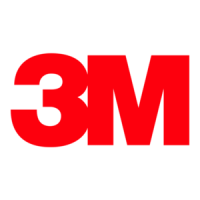
